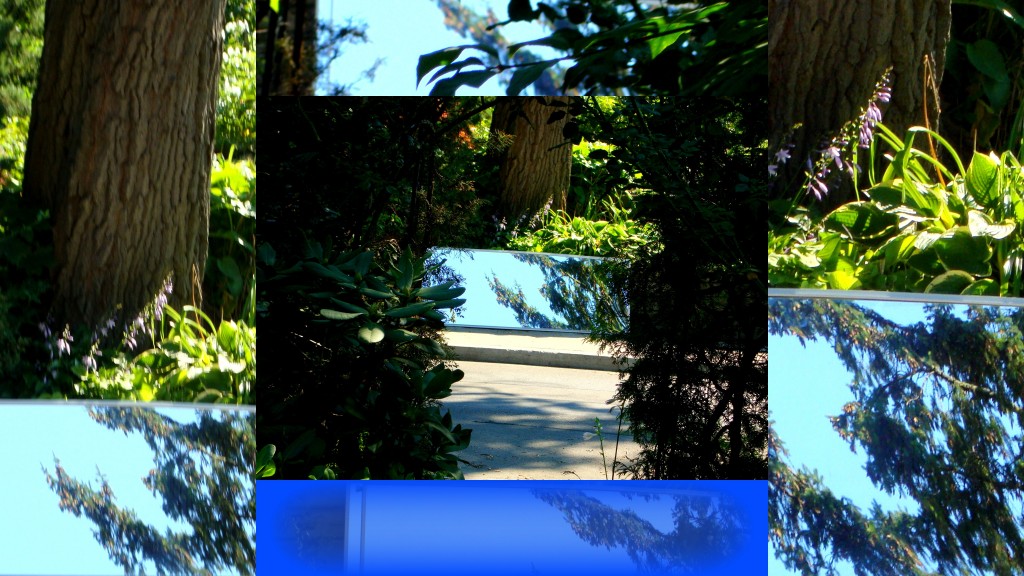 You never know what you will see on the sidewalk before garbage day. Sitting on my porch late one evening, I noticed that my neighbour on the opposite side had put out a mirror. There are huge trees around, and as I sat there sipping my tea, it was the reflection of the branches in the mirror that caught my eye. The images you see here came out of that photo-shoot.
You never know what you will see on the sidewalk before garbage day. Sitting on my porch late one evening, I noticed that my neighbour on the opposite side had put out a mirror. There are huge trees around, and as I sat there sipping my tea, it was the reflection of the branches in the mirror that caught my eye. The images you see here came out of that photo-shoot.
Mirrors are fascinating because they allow us to see ourselves. I read somewhere that little babies start being fascinated with their own reflections in a mirror at about eighteen months. That’s where the love affair with mirrors begins. For those of us later on in life, mirrors tell many tales – known only to us. Year after year, we see the changes taking place in our appearance, for better or worse. Some of us are content with what we see and some of us are very displeased each time we see our reflection in one. The mirror doesn’t care one way or the other. It’s job is to reflect.
The other reflector that is of significant importance is in our brain. Scientists have discovered that we have special cells in the brain that are called “mirror neurons.” When we see someone else going through moments of sadness or joy, or other types of emotions, these cells activate and we “mirror” these feelings. “Mirror neurons are incredibly powerful; “vicarious” would not be a strong enough word to describe their effects. When we watch movie stars kiss onscreen, some of the cells firing in our brains are the same ones that fire when we kiss our lovers. And when we see someone else suffering or experiencing pain, mirror neurons help us to read her or his facial expression and make us viscerally feel the suffering or the pain of the other person. Those moments, I will argue, are the foundation of empathy (and possibly of morality). Research on mirror neurons gives anyone interested in how we understand one another some remarkable food for thought.” (Marco Iacoboni)
Both mirrors are important. One allows us to see ourselves and reflect on the image we see and the other allows us to see others and reflect on their facial expressions. The former is very familiar to us and the latter is based on “new” research. Little did I know that the mirror on the sidewalk would stimulate this kind of thought. One never knows in life. Hope this collage gets you thinking and maybe even reading: “The Science of Empathy and How We Connect with Others” by Iacoboni.
Here’s a Kahlil Gibran quote that may take you to even another dimension on the subject of mirrors and reflections:
|
